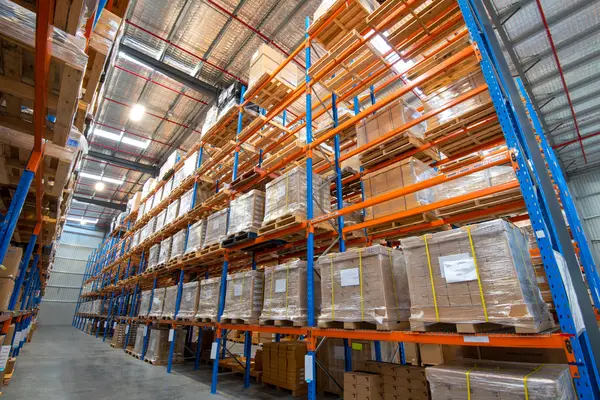
Whether your business is in manufacturing, distribution, eCommerce retail or any other sector that requires storing physical goods, space eventually becomes tight. As sales and inventory grows, the space holding your stock does not and that’s where pallet rack comes in. One of the key components of company warehouse design is the installation of a material storage system. Racking systems allow you to increase the capacity of your warehouse without costly new construction, warehouse leasing or moving your business to a new location.
Pallet rack is a series of upright columns and connecting beams that form a shelf to store palletized goods. Made from steel and coming in a variety of different capacities and configurations, pallet rack can be designed to meet your company’s storage needs.
There are a number of critical factors to consider to maximize the effectiveness of a pallet racking system:
- Type of Racking
- Racking Capacity
- New or Used
Type Of Racking
Racking comes in a variety of different styles, each with their own pros and cons. The most common style is selective racking, this is the style seen in wholesale, home improvement retail small businesses. Selective pallet racking is also the most affordable and offers the highest amount of selectivity (you can select product from any shelf without moving another product.). On the other hand, this style of racking offers low storage density when compared to the other styles of racking. The other common styles of racking are listed in the table below, along with their benefits.
|
Racking Style |
Storage Density |
Selectivity |
Other Notes |
|
Cantilever |
Medium |
High |
Perfect for storing long, unwieldy loads |
|
Drive-Through/Drive-In |
Very High |
Low |
Requires forklift operator to drive into rack |
|
Pushback |
High |
Low |
|
|
Pallet Flow |
High |
Low |
Next pallet is always ready for operator |
Since each style of racking has its own unique set of benefits, your decision must be based on your products, available space and budget.
Racking Capacity
The next critical aspect of selecting a racking system is the capacity. Of course, this will be critical to reduce business owner premises liability. The uprights, beams and wire decks must be rated to hold the weight of your products. The strengths of racking components vary based on their size (length, width), material and production method (roll-formed, etc.).
For this reason, components that appear identical may have different capacities. In order to avoid a catastrophic rack collapse it is imperative that business owners consult an expert before buying a racking system. Pallet rack experts can help you design and specify your system to meet your capacity requirements.
Racking companies can also verify that the pallet rack you are purchasing is RMI certified. RMI, the Rack Manufacturers Institute, is the gold standard for certifying that pallet racking was manufactured correctly and can hold the advertised capacity. Do not take shortcuts when it comes to safety – always verify that your pallet rack is in safe condition and is rated to hold your pallets.
New Or Used
The final aspect of choosing a pallet rack system to improve your company warehouse is whether to purchase new or used. Due to constant warehouse turnover, the market for used pallet rack is generally healthy. The major benefits to used rack is that it is available immediately and it comes at a lower cost – sometimes as low as half the cost of new pallet rack. On the other hand, identifying the manufacturer of used rack can be difficult which makes it impossible to determine whether the rack is RMI certified or what its capacity is. The other negative of used racking systems is that they were designed for someone else’s warehouse – a used racking system may not fit your application exactly.
The benefits of a new system are obvious – they can be designed precisely to fit your needs and there is no question over capacities or safety. New systems are especially common in situations where a business needs to fully maximize the storage capacity of their warehouse – particularly by using a drive-in or drive-through system.
While new and used racking systems have their own sets of pros and cons, the main driving force behind your decision should be budget and design. Generally, if you are okay with adapting someone else’s system into your warehouse, you can achieve significant savings by going for used pallet rack. If your warehouse needs a specially designed racking layout, your best bet would be new racking.
Business Impact
Of course, consider the business impact when choosing a pallet rack. Where you choose selective or cantilever, high capacity or low capacity, new or used, a pallet racking system is critical for maximizing the storage space for your business. By increasing storage density, you can avoid costly building expansions or leasing new space. The right racking system can improve your operator’s productivity and the overall organization of your warehouse. These aspects will have a direct impact on your bottom line.
 Business First Family Business, Accounting, Finance, Investing, Marketing And Management
Business First Family Business, Accounting, Finance, Investing, Marketing And Management